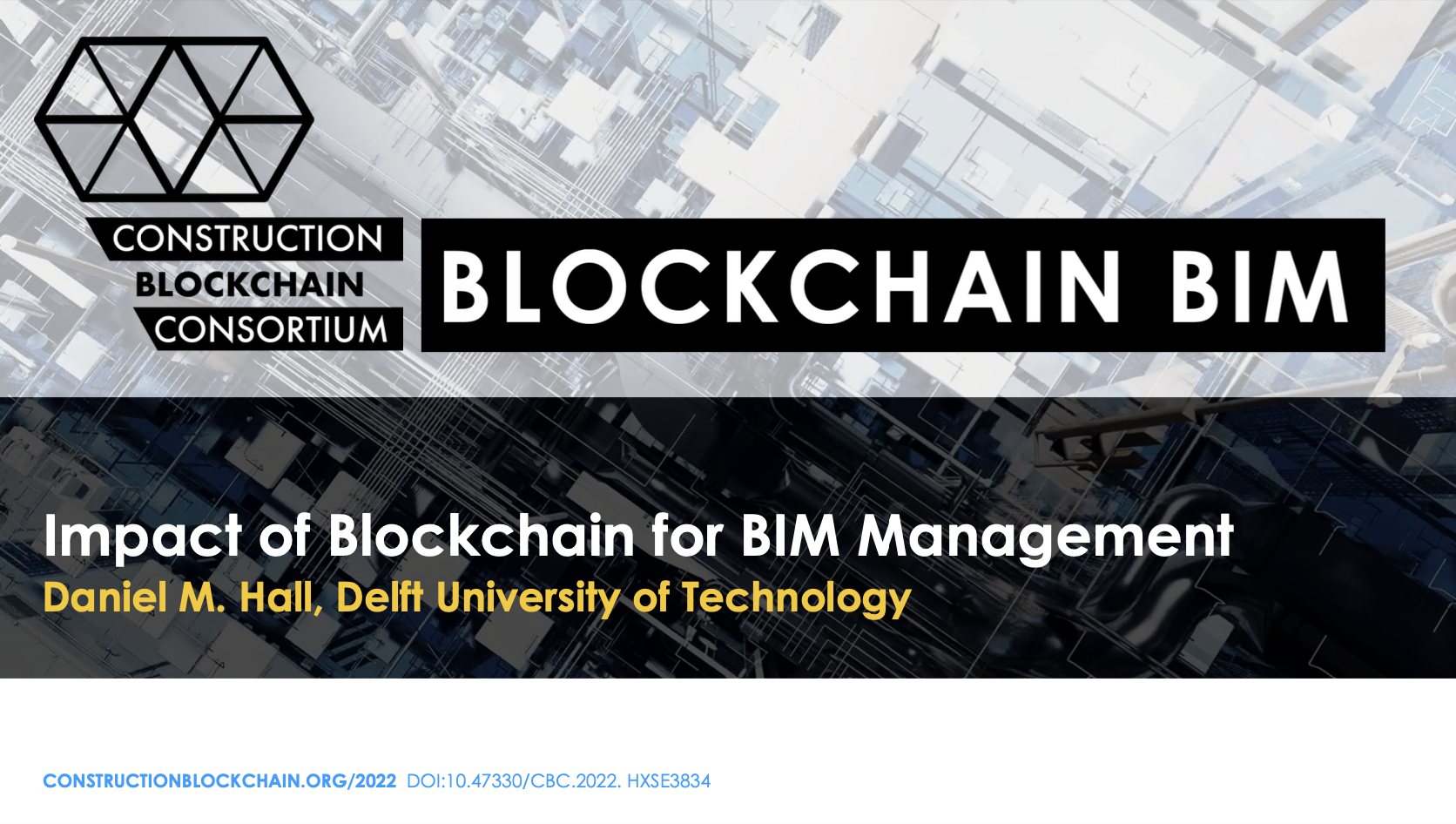Difference between revisions of "Impact of Blockchain for BIM Management"
From Design Computation
| (5 intermediate revisions by the same user not shown) | |||
| Line 5: | Line 5: | ||
[[Category:Conferences]] | [[Category:Conferences]] | ||
| − | [[CBC 2022]] presentation by [[Daniel Hall]]. https://doi.org/10.47330/CBC.2022.RHRA1299 | + | [[CBC 2022]] presentation by [[Daniel Hall]]. https://doi.org/10.47330/CBC.2022.RHRA1299 | Watch [[File:VideoRecord-Icon.png |Left|22px|link=https://youtu.be/I8dA3-ry8c0]] | [[File:Slides-Icon.png |Left|30px|link=https://www.dropbox.com/s/ffqha14mfnysigc/CBC2022_S4-0_D-Hall.pdf?dl=0]] |
| − | [[File: | + | [[File:CBC2022 S4-1 D-Hall.png|center|800px]] |
=Abstract= | =Abstract= | ||
| − | + | This presentation gives a high-level overview of recent research on how to connect BIM and digital twins to Blockchain. Three research papers are summarized that demonstrate: 1) Construction Payment Automation Using Reality Capture, 2) Construction Information Sharing Using a Digital Twin of Robotic Fabrication, and 3) Performance-based Smart Contracts Using a Digital Twin. The ongoing research shows interesting combinations of automated payment and tokenization, provides a basis to understand the transition period of human-machine participation, and demonstrates how new cryptoeconomic incentive models can solve industry fragmentation and “broken agency” in the industry. | |
| − | |||
| − | |||
| − | |||
| − | |||
| − | |||
| − | |||
=Keywords= | =Keywords= | ||
| − | [[ | + | [[BIM]], [[Digital Twins]], [[Smart Contracts]], [[Blockchain]]. |
| − | |||
| − | |||
| − | |||
| − | |||
| − | |||
| − | |||
Latest revision as of 09:23, 14 April 2023
CBC 2022 presentation by Daniel Hall. https://doi.org/10.47330/CBC.2022.RHRA1299 | Watch
Abstract
This presentation gives a high-level overview of recent research on how to connect BIM and digital twins to Blockchain. Three research papers are summarized that demonstrate: 1) Construction Payment Automation Using Reality Capture, 2) Construction Information Sharing Using a Digital Twin of Robotic Fabrication, and 3) Performance-based Smart Contracts Using a Digital Twin. The ongoing research shows interesting combinations of automated payment and tokenization, provides a basis to understand the transition period of human-machine participation, and demonstrates how new cryptoeconomic incentive models can solve industry fragmentation and “broken agency” in the industry.

